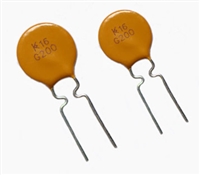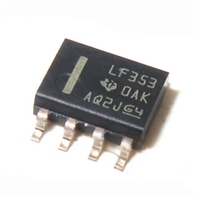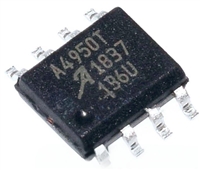Notes:
•
•
•
Over the specified operating voltage and
temperature ranges.
With HALT Line State, (12.5 MHz
square-wave), input signal.
At the end of one meter of noted optical
fiber with cladding modes removed.
19. This specification is intended to indicate
the performance of the receiver section of
the transceiver when Input Optical Power
signal characteristics are present per the
following definitions. The Input Optical
Power dynamic range from the minimum
level (with a window time-width) to the
maximum level is the range over which the
receiver is guaranteed to provide output
1. This is the maximum voltage that can be
applied across the Differential Transmitter
Data Inputs to prevent damage to the input
ESD protection circuit.
2. The outputs are terminated with 50 Ω
connected to V -2 V.
The average power value can be converted
to a peak power value by adding 3 dB.
Higher output optical power transmitters
are available on special request. Please
consult with your local Agilent sales
representative for further details.
CC
3. The power supply current needed to
operate the transmitter is provided to
differential ECL circuitry. This circuitry
maintains a nearly constant current flow
from the power supply. Constant current
operation helps to prevent unwanted
electrical noise from being generated and
conducted or emitted to neighboring
circuitry.
data with a Bit Error Rate (BER) better than
-10
or equal to 2.5 x 10
.
• At the Beginning of Life (BOL)
• Over the specified operating temperature
and voltage ranges
12. The Extinction Ratio is a measure of the
modulation depth of the optical signal. The
data “0” output optical power is compared
to the data “1” peak output optical power
and expressed as a percentage. With the
transmitter driven by a HALT Line State
(12.5 MHz square-wave) signal, the
• Input symbol pattern is the FDDI test
pattern defined in FDDI PMD Annex A.5
with 4B/5B NRZI encoded data that
contains a duty cycle base-line wander
effect of 50 kHz. This sequence causes a
near worst case condition for inter-
symbol interference.
• Receiver data window time-width is 2.13
ns or greater and centered at mid-
symbol. This worst case window time-
width is the minimum allowed
eye-opening presented to the FDDI PHY
PM_Data indication input (PHY input)
per the example in FDDI PMD Annex E.
This minimum window time-width of
2.13 ns is based upon the worst case
FDDI PMD Active Input Interface optical
conditions for peak-to-peak DCD (1.0
ns), DDJ (1.2 ns) and RJ (0.76 ns)
4. This value is measured with the outputs
terminated into 50 Ω connected to
V
CC
- 2 V and an Input Optical Power level
of -14 dBm average.
average optical power is measured. The
data “1” peak power is then calculated by
adding 3 dB to the measured average
optical power. The data “0” output optical
power is found by measuring the optical
power when the transmitter is driven by a
logic “0” input. The extinction ratio is the
ratio of the optical power at the “0” level
compared to the optical power at the “1”
level expressed as a percentage or in
decibels.
5a. The power dissipation of the transmitter is
calculated as the sum of the products of
supply voltage and current.
5b. The power dissipation of the receiver is
calculated as the sum of the products of
supply voltage and currents, minus the sum
of the products of the output voltages and
currents.
6. This value is measured with respect to V
with the output terminated into
50 Ω connected to V - 2 V.
7. The output rise and fall times are measured
CC
13. The transmitter provides compliance with
the need for Transmit_Disable commands
from the FDDI SMT layer by providing an
Output Optical Power level of < -45 dBm
average in response to a logic “0” input.
This specification applies to either 62.5/
125 µm or 50/125 µm fiber cables.
14. This parameter complies with the FDDI
PMD requirements for the trade-offs
between center wavelength, spectral
width, and rise/fall times shown in
CC
between 20% and 80% levels with the
output connected to V -2 V through 50
Ω.
presented to the receiver.
CC
To test a receiver with the worst case FDDI
PMD Active Input jitter condition requires
exacting control over DCD, DDJ and RJ
jitter components that is difficult to
implement with production test equipment.
The receiver can be equivalently tested to
the worst case FDDI PMD input jitter
conditions and meet the minimum output
data window time-width of 2.13 ns. This is
accomplished by using a nearly ideal input
optical signal (no DCD, insignificant DDJ
and RJ) and measuring for a wider window
time-width of 4.6 ns. This is possible due to
the cumulative effect of jitter components
through their superposition (DCD and DDJ
are directly additive and RJ components
are rms additive). Specifically, when a
nearly ideal input optical test signal is used
and the maximum receiver peak-to-peak
jitter contributions of DCD (0.4 ns), DDJ (1.0
ns), and RJ (2.14 ns) exist, the minimum
window time-width becomes 8.0 ns -0.4 ns -
1.0 ns - 2.14 ns = 4.46 ns, or conservatively
4.6 ns. This wider window time-width of 4.6
ns guarantees the FDDI PMD Annex E
minimum window time-width of 2.13 ns
under worst case input jitter conditions to
the Agilent receiver.
8. Duty Cycle Distortion contributed by the
receiver is measured at the 50% threshold
using an IDLE Line State,
125 MBd (62.5 MHz square-wave), input
signal. The input optical power level is
-20 dBm average. See Application
Information - Transceiver Jitter Section for
furtherinformation.
Figure 11.
15. This parameter complies with the optical
pulse envelope from the FDDI PMD shown
in Figure 12. The optical rise and fall times
are measured from 10% to 90% when the
transmitter is driven by the FDDI HALT Line
State (12.5 MHz square-wave) input signal.
16. Duty Cycle Distortion contributed by the
transmitter is measured at a 50% threshold
using an IDLE Line State,
9. Data Dependent Jitter contributed by
the receiver is specified with the FDDI DDJ
test pattern described in the FDDI PMD
Annex A.5. The input optical power level is
-20 dBm average. See Application Informa-
tion - Transceiver Jitter Section for further
information.
10. Random Jitter contributed by the receiver
is specified with an IDLE Line State, 125
MBd (62.5 MHz square-wave), input signal.
The input optical power level is at maxi-
125 MBd (62.5 MHz square-wave), input
signal. See Application Information -
Transceiver Jitter Performance Section of
this data sheet for further details.
mum “P
(W)”. See Application
IN Min.
Information - Transceiver Jitter Section for
furtherinformation.
17. Data Dependent Jitter contributed by the
transmitter is specified with the FDDI test
pattern described in FDDI PMD Annex A.5.
See Application Information - Transceiver
Jitter Performance Section of this data
sheet for further details.
18. Random Jitter contributed by the
transmitter is specified with an IDLE Line
State, 125 MBd (62.5 MHz square-wave),
input signal. See Application Information -
Transceiver Jitter Performance Section of
this data sheet for further details.
11. These optical power values are measured
with the following conditions:
•
The Beginning of Life (BOL) to the End
of Life (EOL) optical power degradation
is typically 1.5 dB per the industry
convention for long wavelength LEDs.
The actual degradation observed in
Agilent’s
• Transmitter operating with an IDLE Line
State pattern, 125 MBd (62.5 MHz
square-wave), input signal to simulate
any cross-talk present between the
transmitter and receiver sections of the
transceiver.
1300 nm LED products is < 1 dB, as
specified in this data sheet.
14






 NTC热敏电阻与PTC热敏电阻的应用原理及应用范围
NTC热敏电阻与PTC热敏电阻的应用原理及应用范围

 GTO与普通晶闸管相比为什么可以自关断?为什么普通晶闸管不能呢?从GTO原理、应用范围带你了解原因及推荐型号
GTO与普通晶闸管相比为什么可以自关断?为什么普通晶闸管不能呢?从GTO原理、应用范围带你了解原因及推荐型号

 LF353数据手册解读:特性、应用、封装、引脚说明、电气参数及替换型号推荐
LF353数据手册解读:特性、应用、封装、引脚说明、电气参数及替换型号推荐

 A4950资料手册解读:特性、应用、封装、引脚功能、电气参数及代换型号
A4950资料手册解读:特性、应用、封装、引脚功能、电气参数及代换型号
